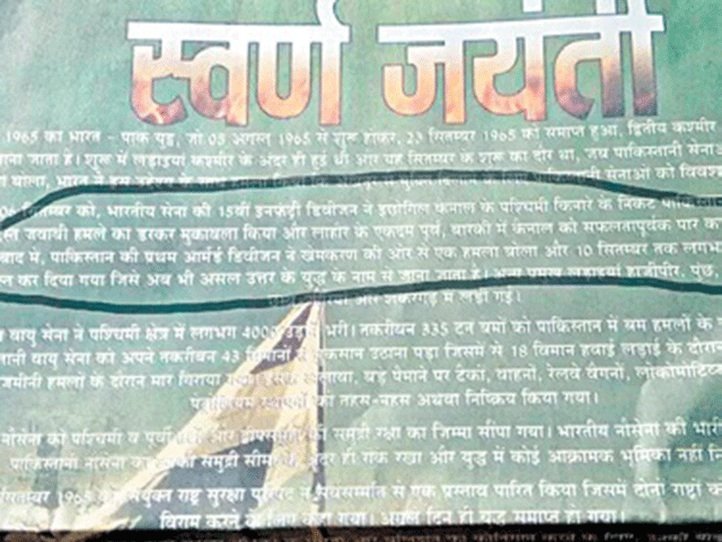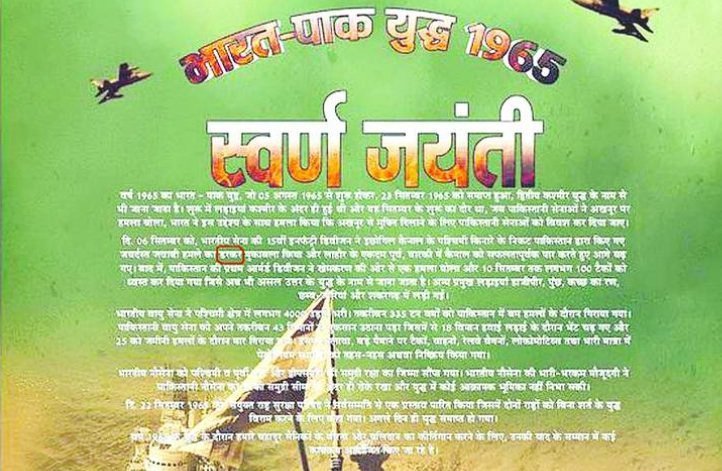Pakistan’s social and print media had a field day poking fun at a blooper in an ad printed by the Narendra Modi government, that seemed to suggest that the Indian Army responded in ‘fear’ to Pakistan in the 1965 war.
The government had issued a full page ad in a Hindi daily on August 23 as part of its grand plans to celebrate the golden jubilee of India’s victory over Pakistan in the 1965 war. In the ad the word ‘datkar’ (valiantly) was typed as ‘darkar’ (with fear) when describing how an Indian infantry division responded to a Pakistani attack.
Unfortunately for India the embarrassment didn’t end there. Another ad published in English dailies appears to show that 100 Indian army tanks were destroyed in Asal Uttar. It is important to note here that war historians have described the battle of Asal Uttar as one of the greatest defeats suffered by the Pakistani army in 1965.
” Pakistan’s 1st armoured division pushed an offensive towards Khem Karan and by 10 September nearly 100 tanks lay destroyed in what is now known as the Battle of Asal Uttar,” the ad said (as quoted by the Telegraph ).

Pakistan couldn’t have enough of this gaffe.
” A blundered advertisement in India has rewritten the entire history of the 1965 Indo-Pakistan war and virtually handed over victory to Pakistan,” wrote The Express Tribune , an English daily published in Lahore.
“Indian advert gives victory to Pakistan for Indo-Pak war in 1965,” said another news portal in Pakistan.
People took to social media sites like Facebook to share their amusement. ” Finally, the Indian government admits what the Indians wont… that their army is scared of Pakistani army,” said one of the posts.
Back in India, the finger of blame was being pointed in every direction. The Directorate of Visual Publicity, the agency in charge of issuing central government ads to the media, tried to pass the buck onto the Hindi daily.

“The English design was handed over to us by the directorate, military intelligence, and we gave it to several English and Hindi dailies,” N.V. Reddy, the additional director-general of the DAVP, told The Telegraph.
“Nowadays we ask Hindi dailies to translate English designs but one newspaper made a mistake in the process. We have pulled them up and asked them to publish the ad again and they will not be paid this time,” Reddy said.
The English version of the ad was ‘okayed’ by the DAVP before it went for publication. However, there are members of the DAVP that claim the mistakes happen because the agency does not have enough translators, but they have accepted that the onus for the ads ‘correctness’ should lay with the agency.
” Our clients – various ministries and government departments – give us ad designs in English and Hindi but when they give only the English version, it is becoming increasingly difficult to get them translated into other languages as there are limited number of translators available with us,” said a director-level official.

















